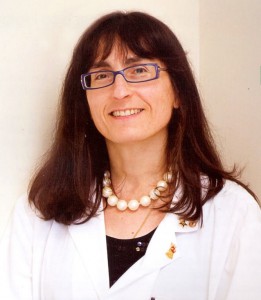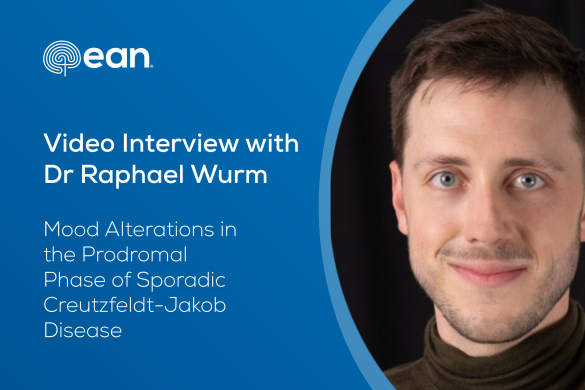For May 2015 we have selected: The CADISS trial investigators. Antiplatelet treatment compared with anticoagulation treatment for cervical artery dissection (CADISS): a randomized trial. Lancet Neurology 2015;14:361-367.
The treatment of extracranial carotid and vertebral artery dissection is still empirical. There is not enough data currently supporting the efficacy of antiplatelet or anticoagulant treatment to prevent a secondary cerebral ischemic event, estimated around 15-20% in some observational studies. However, the treatment choice is not trivial, since anticoagulant drugs carry the risk of both the extension of the intramural haemorrhage and the haemorrhagic transformation of the initial ischemic stroke.
To provide practical guidance about dissection treatment, the Cervical Artery Dissection in Stroke Study (CADISS) was conducted in 46 clinical centres between UK and Australia. A total of 250 patients (118 with carotid, and 132 with vertebral, extracranial dissection diagnosed with MRI, or angio-MRI, or angio-CT or intra-arterial angiography) with the onset of neurological symptoms within one week were enrolled in the study and randomised to either antiplatelet or anticoagulant drugs. The primary outcome was the onset of ipsilateral stroke or death within a 3-month time window. An adjudication committee blinded to the treatment allocation assessed the study endpoints. In the intention-to-treat population there were 4 ipsilateral strokes (3 in the antiplatelet group and 1 of the anticoagulant group; OR 0.335, p-value 0.63). There were no deaths but one subarachnoid bleed occurred in the anticoagulant group.
“In this first randomized controlled treatment trial in dissection there was no significant difference between recurrent stroke rate in those taking antiplatelets or anticoagulants”, says Professor H.S. Markus, the lead author of the CADISS, from the Department of Neurology of the University of Cambridge, UK. “The recurrent stroke rate at 3 months was only 2%, which is lower than reported in some previous studies. In practice, either treatment seems reasonable.”
Some limitations of the study are the great variability in the use of antiplatelet drugs between centres and the lack of rigorous imaging criteria for dissection. Indeed, “in 20% of cases dissection was not confirmed on central imaging review, suggesting that criteria for diagnosis are not correctly applied in all cases”, continues Professor Markus. “Clinicians need to review the diagnosis and imaging carefully.” Nevertheless, also in the population with confirmed dissection (101 with antiplatelet and 96 with anticoagulation drugs) there was no difference between the two treatments.
This is an important paper addressing a difficult topic and helping neurologists in making their treatment decision between antiplatelet and anticoagulant drugs”, says Dr F Fazekas, from the Department of Neurology, Medical University of Graz, Austria. “In fact, the CADISS results suggest that this decision may not be that crucial and that both strategies lead to a similar outcome.”
“However, the low incidence of complications secondary to dissection reported in the CADISS is somewhat in contrast with the available observational literature and perceived experience”, continues Dr Fazekas. “In clinical practice it is not rare that patients have signs of continuing dissection with progression of stenosis up to occlusion or develop pseudoaneurysms. This discrepancy might be due to some biases in the CADISS patients’ enrollment, as suggested by the long time needed for recruitment (7 years) despite a high number of participating centers. Thus, more critical patients may have been excluded because of preconceived therapeutic attitudes of the investigators. Any future trial should certainly focus only on patients with a more likely risk of stroke recurrence and include careful, standardized and repeated vascular imaging.”
The other nominees for the May’s paper of the month are:
- Korfel A, Thiel E, Martus P, et al. Randomized phase III study of whole-brain radiotherapy for primary CNS lymphoma. Neurology 2015; 84:1242-1248: The final report on high-dose methotrexate chemotherapy (HDMTX) alone versus HDMTX followed by whole-brain radiotherapy showed no differences in survival of primary CNS lymphoma patients after a median follow-up of 81.2 months.
- Salanova V, Witt T, Worth R et al., for the Sante Study Group. Long-term efficacy and safety of thalamic stimulation for drug-resistant partial epilepsy. Neurology 2015;84:1017-1025: This 5-year follow-up of bilateral deep brain stimulation of the anterior thalamic nuclei showed a sustained efficacy and safety in patients with treatment-resistant and localization-related epilepsy.
- Zaidat OO, Fitzsimmons B-F, Woodward BK, et al., for the VISSIT Trial Investigators. Effect of a balloon-expandable intracranial stent vs medical therapy on risk of stroke in patients with symptomatic intracranial stenosis. JAMA 2015;313:1240-1248: In this international, multicenter, randomized clinical trial the use of a balloon-expandable stent compared with medical treatment presented with an increased risk of added stroke or TIA in patients with symptomatic intracranial stenosis (>70%).
- Mancardi GL, Sormani MP, Gualandi F, et al., for the ASTIMS. Autologous hematopoietic stem cell transplantation in multiple sclerosis: A phase II trial. Neurology 2015;84:981-988: Intense immunosuppression followed by autologous hematopoietic cell transplantation was more effective than mitoxantrone in reducing new T2 lesions in secondary progressive or relapsing-remitting multiple sclerosis patients.
- Huang X, Cheripelli BK, Lloyd SM, et al. Alteplase versus tenecteplase for thrombosis after ischemic stroke (ATTEST): a phase 2, randomized, open-label, blinded endpoint study. Lancet Neurology 2015;14:368-376: there was no difference in the percentage of penumbra salvaged between alteplase and tenecteplase treatment in patients with supratentorial ischemic stroke.







1 comment
Thank you for this important information!